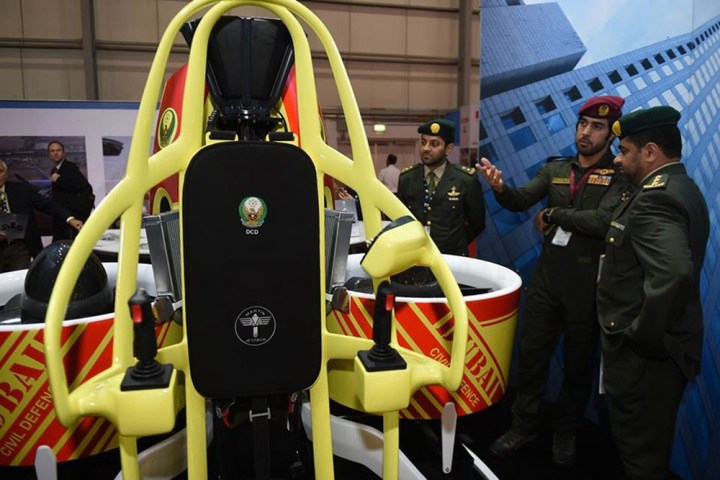
Signed on November 9 at this week’s Dubai Air Show, the agreement with Martin Aircraft secures future delivery of manned and unmanned jetpacks to the DCD, as well as a series of flight simulators, and training for Dubai’s service staff. What this amounts to is roughly 20 jetpacks (at around $35k per unit), two simulators, and complete hands-on operational training with pilots and engineers. Due in part to the incredibly steep learning curve that comes with using this technology, a timetable for deploying a jetpack-toting firefighter was not given.
“The vision of Dubai Civil Defence is protecting lives, properties and environment and to provide fast professional service, efficient investment of human and material sources to give [the] best results,” says DCD’s Lt. Col. Ali Almutawa. “Dubai is one of the fastest growing future cities in the world with its modern skyscrapers and vast infrastructure… the introduction of Martin jetpacks into our fleet of emergency response vehicles is another example of how Dubai leads the world.”
Under the wing, the jetpack boasts the ability to carry payloads of over 250 pounds, meaning the design gives current firefighting quadcopters and drones a run for their money. Though 250 pounds still seems a tad low considering it has to carry a firefighter and their equipment, Martin and the DCD feel confident enough in the jetpack’s capability to move forward with the partnership. What is incredibly clear, however, is how easily firefighters will be able to access hard to reach areas of crisis with one of these contraptions strapped to their backs — something a skyscraper-happy city like Dubai will greatly benefit from.
In a press release published by Martin Aircraft, the company goes so far as to dub the jetpack a “disruptive technology,” meaning it sees its design as having the ability to greatly alter the firefighting industry. Considering the fairly non-existent precedent for how to best go about fighting skyscraper fires, Martin doesn’t sound far off with its opinion. Assuming the training goes well and the DCD’s Fire Service personnel has the wherewithal to appropriately operate these jetpacks, it seems plausible this partnership could revolutionize the firefighting industry in Dubai.



